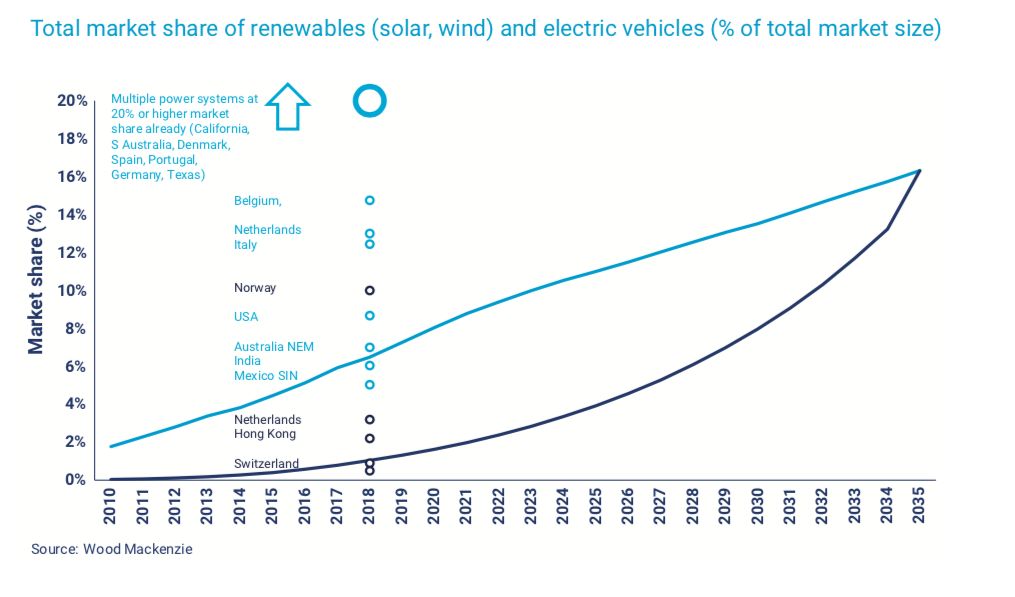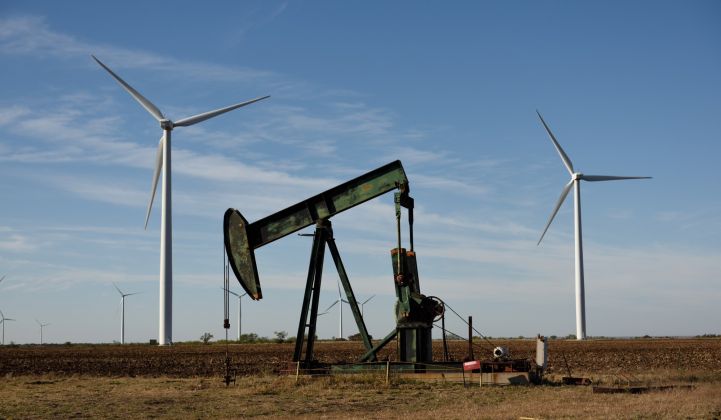By 2035 the global energy transition will reach a point of no return, according to a recent report from Wood Mackenzie.
By that year, says WoodMac, renewables will likely meet 20 percent of global power demand, up from today's 7 percent. The combination of wind, solar and electric vehicles will displace about 100 billion cubic feet of oil per day, creating an “unstoppable” shift for companies and countries around the world.
“Stopping this transition seems highly unlikely,” reads the report. “It’s going to happen.”

Though several global power markets already claim percentages of renewables above 20 percent, WoodMac projects a wide range of markets will rise to reach that level in coming decades. After that, adoption of renewables accelerates even faster — with wind, solar and electrified transport becoming “the default choice across many energy systems around the world.”
Power markets will completely transform. WoodMac notes in the report that wind, solar and storage all have “high disruptive potential in power markets.”
A year after the 2035 inflection point, WoodMac forecasts a peak in oil demand, with electric motors accounting for 15 to 20 percent of all miles traveled in buses, cars, trucks or on bicycle. Electric vehicles could eliminate the use of 6 million barrels of oil per day by 2040.
WoodMac also notes the inflection point could come earlier as policy gets more ambitious, or if technologies such as advanced energy storage and microgrids take root earlier than current projections.
The report is significant in that it's coming from an oil and gas consulting group. In September, WoodMac unveiled its new Power & Renewables team, assembled from its own global power analysts along with analysts from recently acquired companies MAKE Consulting, which focuses on wind research, and GTM Research.
The transition is inevitable and powerful. But WoodMac’s projections are still far behind the emissions scenarios that scientists say are necessary to mitigate the worst effects of climate change. In a report released by the U.N. this month, authors claimed the world needs to get 70 to 85 percent of its electricity from renewables by mid-century to limit warming to 1.5°C.
WoodMac’s head of global wind energy research Dan Shreve said, “We’re going to have a tremendous amount of difficulty” reaching the IPCC’s goals based on WoodMac’s current projections of the energy transition.
Want deeper analysis on where things stand? Click here to read more on how WoodMac’s report compares to the IPCC’s vision.
--
Join GTM at the upcoming Power & Renewables Summit! We'll cover how decarbonization, sector electrification and shifting regulatory developments will transform power markets over the next 10-to-20 years. We have already confirmed senior executives with FERC, Exelon, ERCOT, PJM, APS, Microsoft, Dell, CPS Energy, NRG, CohnReznick, Los Angeles Department of Water & Power and many more. Learn more here.




